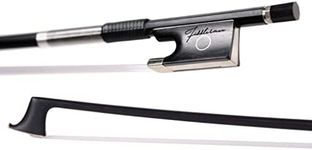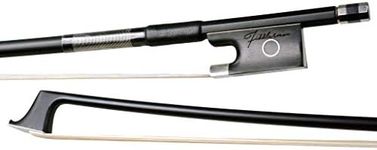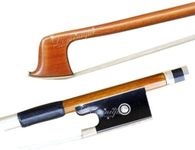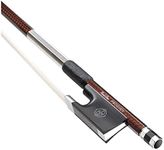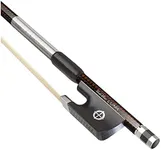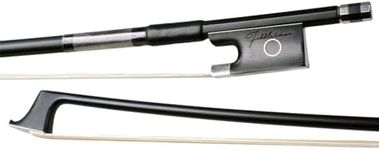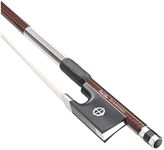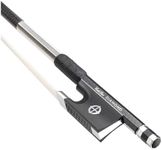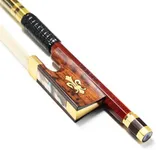Buying Guide for the Best Violin Bows
Choosing the right violin bow is crucial for any violinist, whether you're a beginner or a seasoned player. The bow significantly affects the sound and playability of your instrument. When selecting a violin bow, consider factors such as weight, balance, material, and flexibility. Each of these aspects can influence your playing experience and the sound produced by your violin. Understanding these key specifications will help you make an informed decision and find the best fit for your needs.WeightThe weight of a violin bow typically ranges from 58 to 62 grams. This spec is important because it affects the ease of handling and the sound production. Lighter bows (around 58 grams) are easier to maneuver and can be ideal for beginners or those who play fast, intricate pieces. Heavier bows (closer to 62 grams) can produce a richer, fuller sound and may be preferred by advanced players. To pick the right weight for you, consider your playing style and physical comfort. If you are just starting out, a lighter bow might be more manageable.
BalanceBalance refers to how the weight of the bow is distributed along its length. A well-balanced bow feels comfortable in your hand and allows for smooth, even strokes. This spec is important because it affects control and ease of playing. Bows can be tip-heavy, frog-heavy, or evenly balanced. Tip-heavy bows can provide more power but may be harder to control, while frog-heavy bows offer better control but less power. Evenly balanced bows are generally preferred for their versatility. To find the right balance, try holding and playing with different bows to see which feels most comfortable and responsive.
MaterialViolin bows are typically made from either wood or synthetic materials like carbon fiber. This spec is important because it influences the bow's durability, flexibility, and sound quality. Wooden bows, often made from pernambuco or brazilwood, are traditional and can produce a warm, rich tone. However, they can be more expensive and less durable. Carbon fiber bows are more durable and resistant to changes in humidity and temperature, making them a good choice for students or outdoor performances. They can also produce a clear, bright sound. To choose the right material, consider your playing environment and the type of sound you prefer.
FlexibilityFlexibility refers to how much the bow bends when pressure is applied. This spec is important because it affects the bow's responsiveness and the ease of producing different dynamics and articulations. Stiffer bows provide more stability and control, which can be beneficial for beginners or those playing fast passages. More flexible bows allow for greater expression and nuance in your playing, which can be advantageous for advanced players. To pick the right flexibility, consider your skill level and the type of music you play. Beginners might prefer a stiffer bow for its stability, while advanced players might opt for a more flexible bow for its expressive capabilities.

